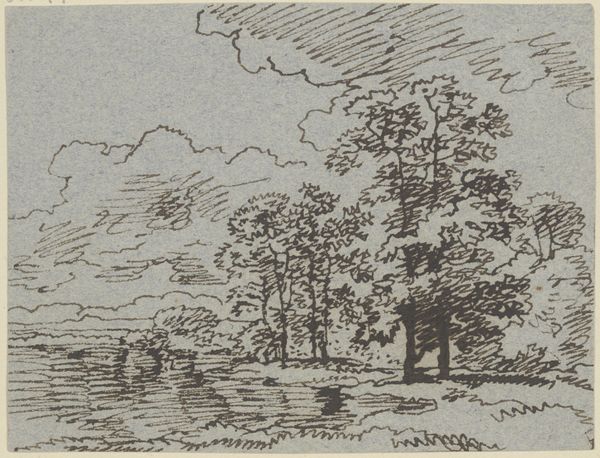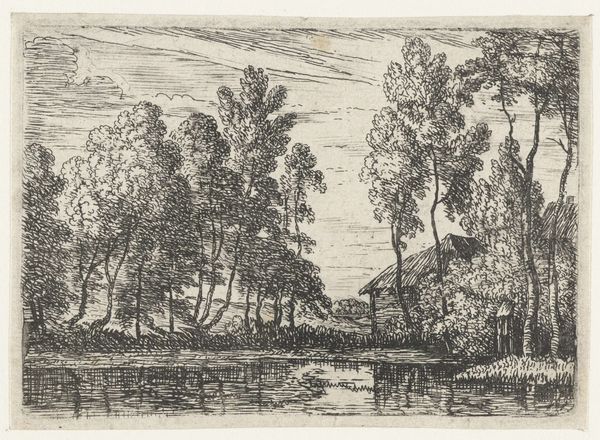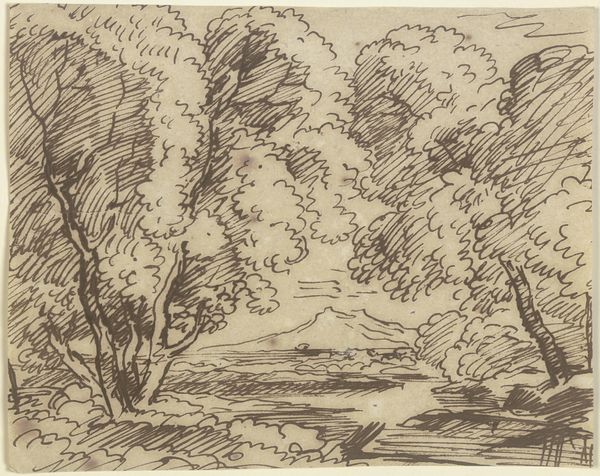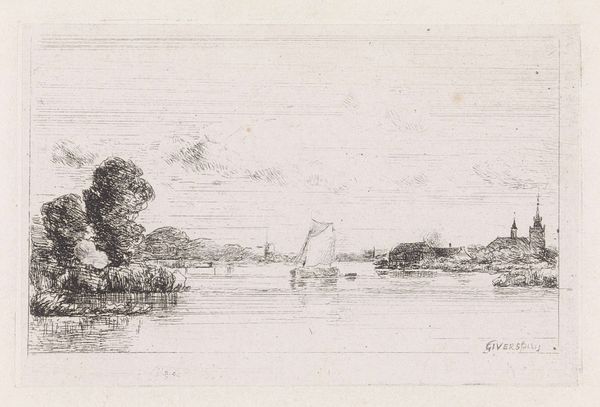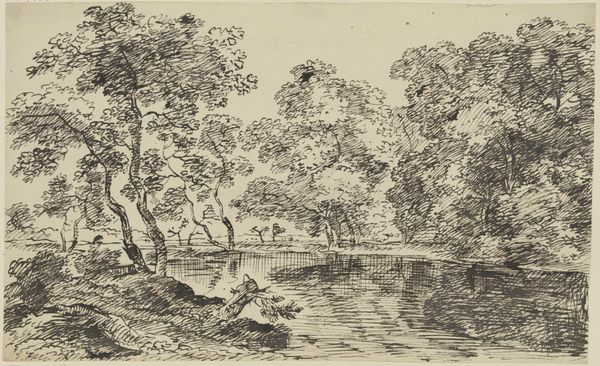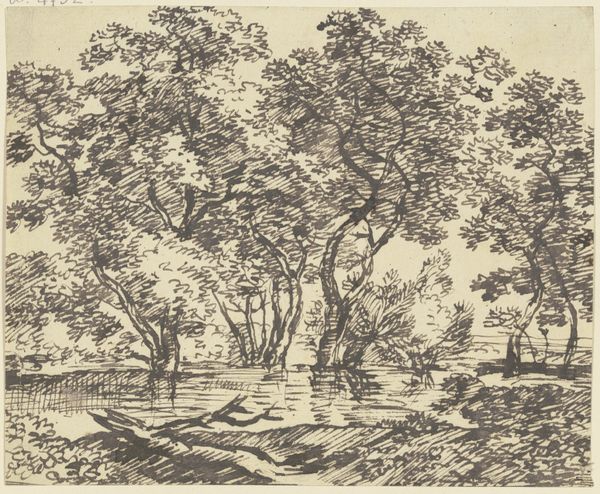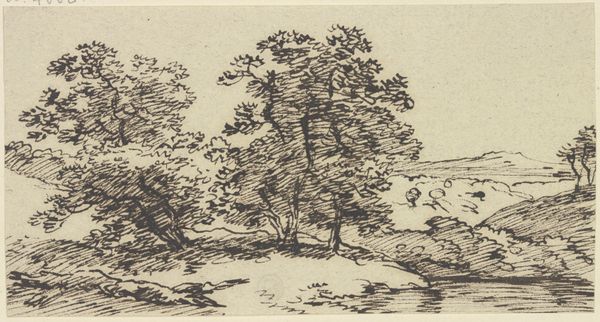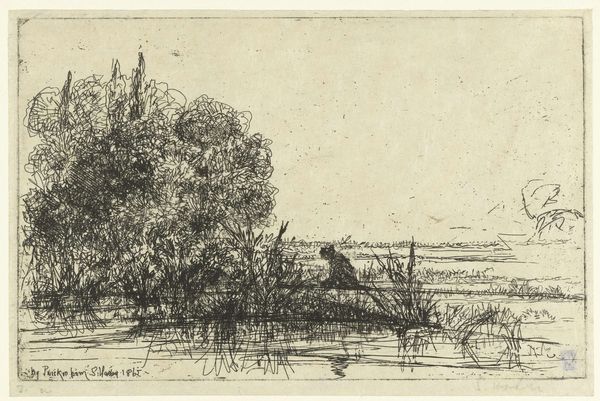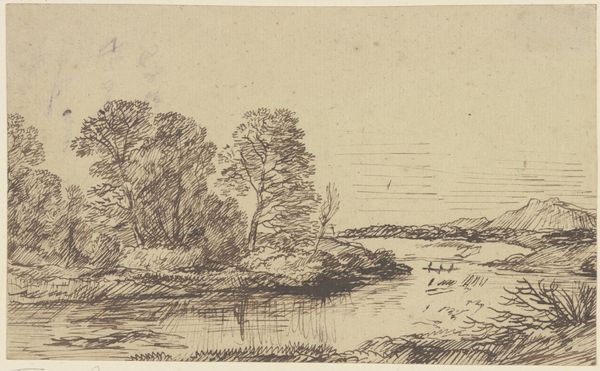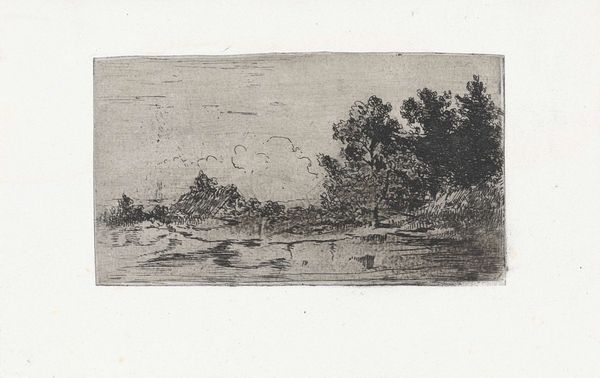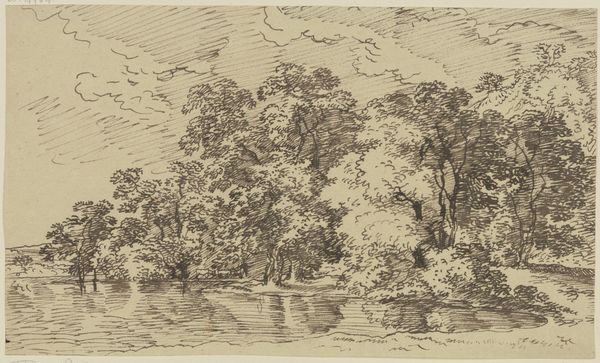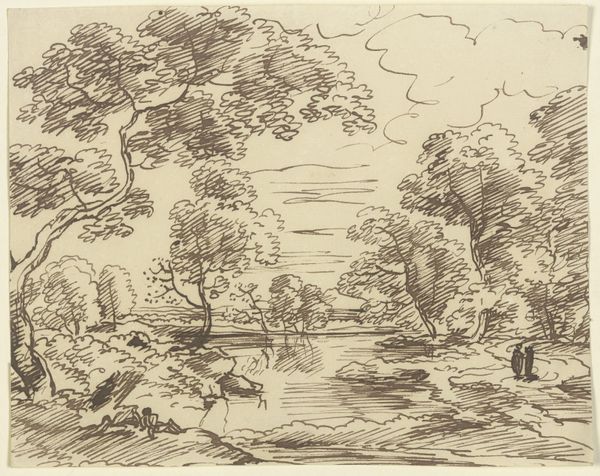
drawing, etching, ink
#
pen and ink
#
drawing
#
ink drawing
#
pen sketch
#
etching
#
landscape
#
ink
Dimensions: height 72 mm, width 129 mm
Copyright: Rijks Museum: Open Domain
Editor: So, this is “Rietgedekte hut aan het water” – “Thatched Hut by the Water” – an etching by Arnoud Schaepkens, likely created sometime between 1831 and 1904. It feels very intimate, almost like a quick sketch, with a lot of detail packed into a small space. How do you interpret this work, thinking about its cultural and historical context? Curator: The image resonates with a romanticized vision of rural life. Consider the rise of industrialization during that period. Artists began to valorize nature and simple living in opposition to the rapidly changing urban landscapes. The "thatched hut" itself becomes a symbol – perhaps of resistance against relentless progress, representing a desire for simpler times. Editor: That makes sense. It feels like it's about finding beauty in the ordinary, something genuine. Was there a specific political angle in valorizing rural landscapes at this time? Curator: Absolutely. Visualizing and romanticizing the rural was a way of implicitly critiquing the social inequalities arising from industrial capitalism. Consider who has access to these tranquil settings and who is denied them. Artists like Schaepkens might have been unconsciously or consciously reflecting these divides. Who, historically, do you imagine occupying this home? How does gender, class, or race factor into that image for you? Editor: I hadn't really considered it from that angle. I guess I was just seeing the quaintness of the hut. But, yes, the question of who gets to live there is important. It reframes the image entirely. Curator: Precisely. Art encourages us to examine not only what is present but also what is absent and to ask crucial questions about power, representation, and social justice in seemingly serene landscapes. Editor: This gives me a whole new way of seeing landscape art. It's not just about pretty scenes, but about understanding social tensions. Curator: Indeed. And the etching, as a medium, affordable and reproducible, made these ideas more accessible to a broader audience, thus enabling wider social dialogues. Editor: Thanks! It’s really interesting to see how something so simple can be so complex when we look at its social context.
Comments
No comments
Be the first to comment and join the conversation on the ultimate creative platform.
